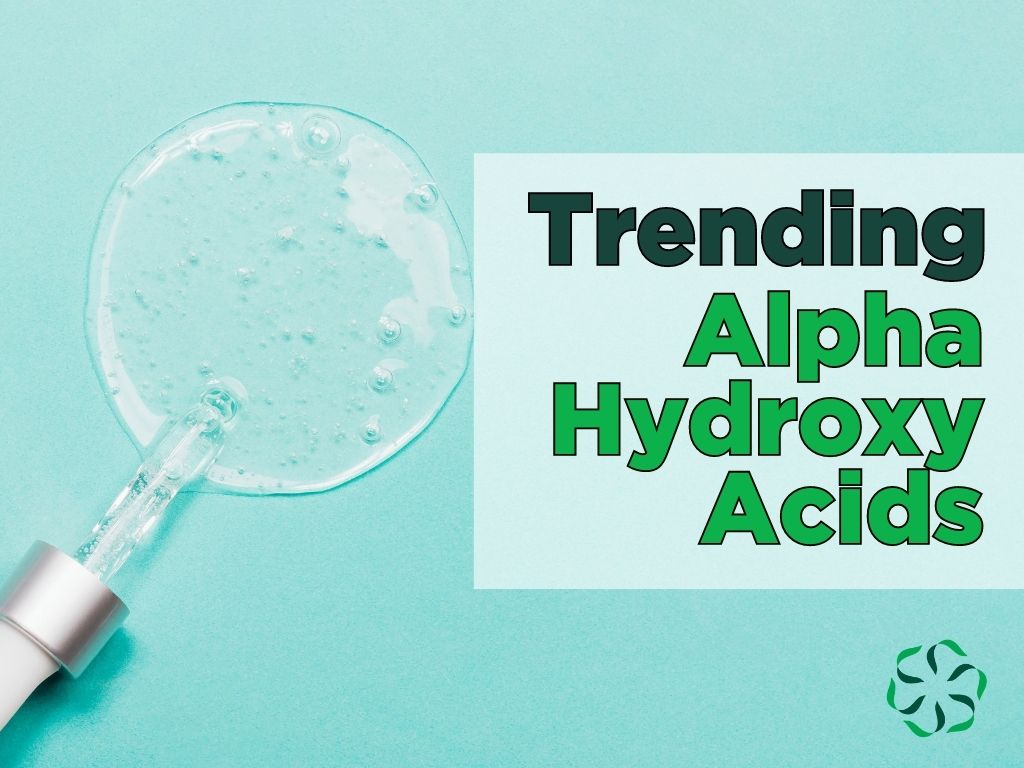We find alpha-hydroxy acids ingredients in many popular cosmetic products, and it continues to be a popular ingredient topic on social media. In this post, we explore alpha-hydroxy acids and what it means for you.
What are alpha-hydroxy acids?
Alpha-hydroxy acids (AHAs) are naturally occurring or synthetically derived ingredients that are popular in cosmetic products.
The most common AHAs used in cosmetic products are glycolic acid and lactic acid. Other AHA ingredients we can find in cosmetics include citric acid, hydroxycaprylic acid, hydroxycapric acid, malic acid, and tartaric acid (1,2).
What do AHAs do?
Manufacturers add these ingredients to cosmetic products to help reduce surface wrinkles and smooth fine lines, improve skin tone and texture, cleanse pores, and improve skin condition. We also see AHAs containing products marketed to adjust skin pH levels (1).
Do these ingredients work?
Evidence suggests that AHA ingredients can improve skin appearance (1,2). While the ingredients can have the desired effect, it’s important to keep in mind that more doesn’t always mean better.
Using too many AHA ingredients (or any ingredient) can cause harm and damage to the skin. It’s important to follow the manufacturer’s recommended use guidelines.
Have they been tested?
Unlike many cosmetic ingredients, the Food and Drug Administration (FDA) has researched AHA ingredients to explore their safety as it pertains to increased UV sensitivity and skin cell damage (1).
Researchers confirmed that using AHA products can increase skin’s sensitivity to UV light damage. Thankfully, they also confirmed that ceasing product use reverses the sensitivity.
The FDA also partnered with the National Toxicology Program (NTP) to see if there are adverse long-term skin-cancer-related effects from using one of the most common ingredients in AHA products, glycolic acid, and light exposure (i.e., photocarcinogen). The FDA and NTP did not find glycolic acid to be a photocarcinogen (1).
However, with all things, the dose makes the poison, so it’s essential to keep in mind how much product we use, how frequently we use the product, and what other ingredients and products are we using in conjunction with the AHA containing products that could impact the outcome.
What else do I need to know?
It’s important to remember that your skin pH needs to stay in a specific range to remain healthy, and adding products that alter your skin’s pH level could have adverse effects.
Additionally, products containing AHA ingredients used by licensed medical professionals to perform medical procedures are different than an over-the-counter cosmetic product.
Using products with high concentrations of AHA ingredients or high or low pH levels without the guidance of a medical professional is not advised.
The good news.
As long as you wear your sunscreen and sun protection gear, you can safely use products that contain AHA ingredients and know that they can work as intended. As we go into these bright summer months, learning how to use AHA products safely can keep our skin healthy and safe all summer long.

